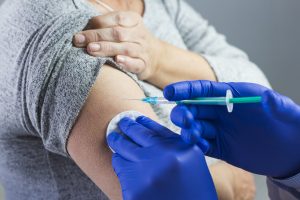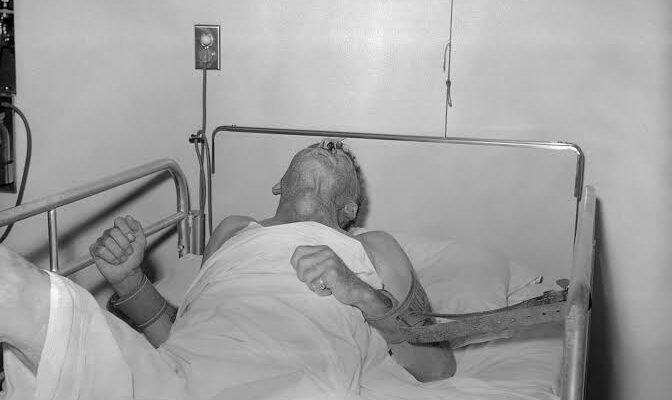Overview
Rabies is a viral infection that affects the central nervous system, leading to inflammation of the brain and, ultimately, death if not treated promptly. The rabies virus is typically transmitted through the bite or saliva of an infected animal, with common carriers including dogs, bats, raccoons, and other wild animals. Once symptoms of rabies appear, the disease is almost universally fatal, which makes early intervention essential for anyone exposed to the virus.
Treatment for rabies primarily involves post-exposure prophylaxis (PEP), a course of immediate medical care designed to prevent the virus from advancing to symptomatic stages. PEP typically includes a series of rabies vaccinations and, in some cases, rabies immune globulin (RIG), which delivers antibodies directly to help neutralize the virus at the site of entry. This treatment must begin as soon as possible after exposure to be effective.
With swift and proper treatment, rabies is preventable, even after exposure. It is critical for individuals exposed to potentially rabid animals to seek medical attention immediately. Timely administration of the PEP treatment series offers highly effective protection, helping individuals avoid the onset of rabies symptoms and ensuring a positive prognosis.
Table of Contents
When to See a Doctor
If you have been bitten or scratched by an animal that may be infected with rabies, or if you’ve had any other possible exposure to the saliva of a potentially rabid animal, it’s crucial to seek medical attention immediately. Rabies is a rapidly progressing virus that is almost always fatal once symptoms develop, so early treatment is essential to prevent the disease from advancing.
You should see a doctor right away if:
- You were bitten by a wild animal, especially high-risk species like bats, raccoons, skunks, foxes, or coyotes.
- You were bitten by a pet or domesticated animal that appears sick, is behaving aggressively, or is unvaccinated.
- You experienced any contact with saliva from a potentially rabid animal, even if there was no visible bite or scratch.
- You were exposed to bats, particularly if you were asleep and found a bat in the room, as bites may go unnoticed.
Prompt medical intervention is critical to start the post-exposure prophylaxis (PEP) treatment series as soon as possible, which is highly effective in preventing the onset of rabies symptoms.
What Type of Doctor to Seek
For rabies exposure, start by visiting an emergency room or an urgent care clinic where a healthcare provider can assess the risk of rabies and begin immediate treatment. In most cases, an emergency physician will administer the post-exposure prophylaxis (PEP), which includes the rabies vaccine series and possibly rabies immune globulin (RIG). Some general practitioners or family doctors may also be able to provide initial care, but emergency or urgent care facilities are better equipped to handle timely treatment.
If you’re uncertain about the animal’s rabies status, the emergency healthcare provider may work with local animal control or public health authorities to determine the risk level and need for PEP.
What to Expect From Your First Doctor Visit
During your initial visit, the doctor will perform a comprehensive assessment to determine the likelihood of rabies exposure and develop a treatment plan. Here’s what to expect:
- Exposure Risk Assessment. The doctor will ask about the type of animal, the nature of the exposure (bite, scratch, or other contact), and the animal’s behavior or health status. They may also ask if the animal was captured and tested for rabies.
- Wound Care. If there is an open wound, the doctor will clean and disinfect it to help prevent infection. Proper wound care is essential in minimizing the risk of both rabies and other infections from animal bites.
- Post-Exposure Prophylaxis (PEP) Treatment. If rabies exposure is suspected, the doctor will begin the PEP treatment. This may involve a dose of rabies immune globulin (RIG), administered directly around the bite or scratch area to deliver immediate antibodies, followed by a series of rabies vaccines given over two weeks.
- Monitoring and Follow-Up. After the initial treatment, the doctor will advise on follow-up care, which may include completing the full vaccine series and monitoring the wound for signs of infection.
Seeking immediate medical care and starting PEP treatment promptly offers the best protection against rabies, ensuring that the virus does not progress to the deadly symptomatic stage.
Rabies Treatment Options
 Image Source: www.freepik.com
Image Source: www.freepik.com
Humans can contract rabies if they are bitten or scratched by an infected animal. Infection can also occur if an infected animal licks an open wound on a person’s skin. If you experience any of these exposures, it’s critical to take immediate action with the following steps:
- Wash the Wound Immediately for 15 Minutes. Rinse the wound thoroughly with water and soap for at least 15 minutes to remove as much saliva as possible. This step helps reduce the virus’s potential to infect the body.
- Clean with Povidone-Iodine Solution. After washing with soap and water, you can also clean the wound with povidone-iodine to further disinfect it. This antiseptic solution adds another layer of protection against infection.
- Seek Medical Attention Right Away. It’s essential to consult a healthcare professional immediately, even if the wound appears minor. They can assess the risk of rabies and recommend the necessary treatment.
- Get Vaccinated for Rabies Before Symptoms Appear. Post-exposure prophylaxis (PEP) should be started as soon as possible. The rabies vaccine is highly effective at preventing the virus from progressing, but it must be administered before any symptoms arise.
It’s important to remember that it can be difficult to know right away if an animal is carrying rabies. However, taking preventative steps is critical because once rabies symptoms begin, the disease is almost always fatal. Therefore, following these steps immediately after any potential exposure is crucial to ensure the best possible outcome.
Rabies Prognosis
The prognosis for rabies is highly dependent on whether treatment is sought immediately after exposure. When post-exposure prophylaxis (PEP) is administered promptly, the outlook is excellent, as the treatment effectively prevents the virus from progressing to the symptomatic stage. With PEP, individuals exposed to rabies through bites or contact with infected animals can avoid the onset of the disease and achieve a full recovery, with no long-term effects from the virus itself.
However, if treatment is delayed until after symptoms appear, the prognosis becomes extremely poor. Once clinical symptoms of rabies develop—such as fever, confusion, muscle spasms, and hydrophobia—the disease is almost always fatal, as there is no known cure at this stage. Despite extensive medical support, rabies has one of the highest mortality rates of any infectious disease once it reaches the symptomatic phase.
Due to the virus’s severity, rapid intervention remains essential for anyone potentially exposed to rabies. With the prompt administration of PEP, rabies is entirely preventable, underscoring the importance of immediate medical attention following any risky exposure.


